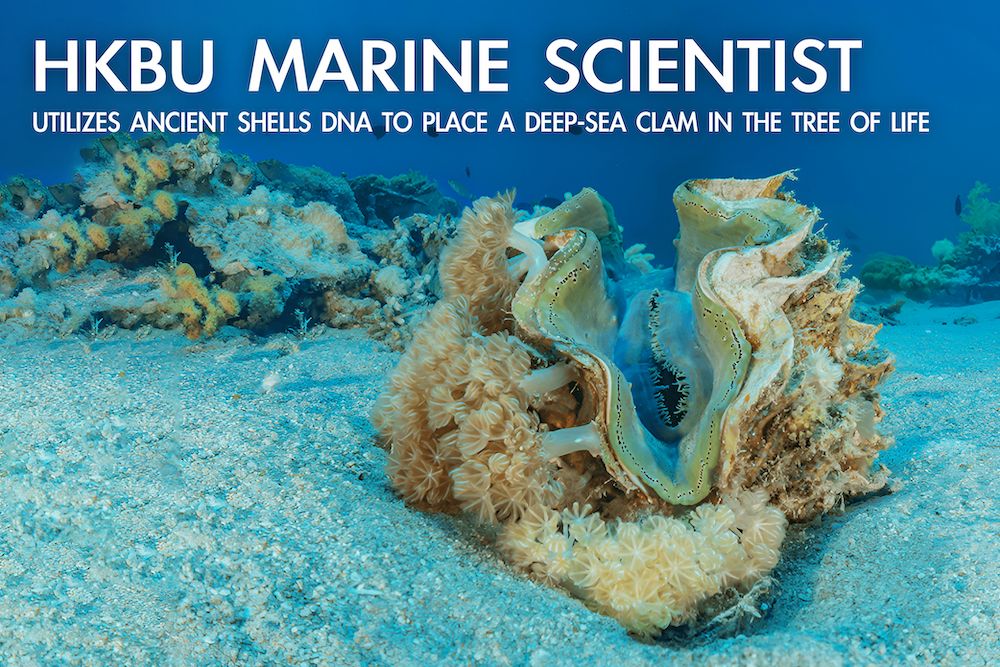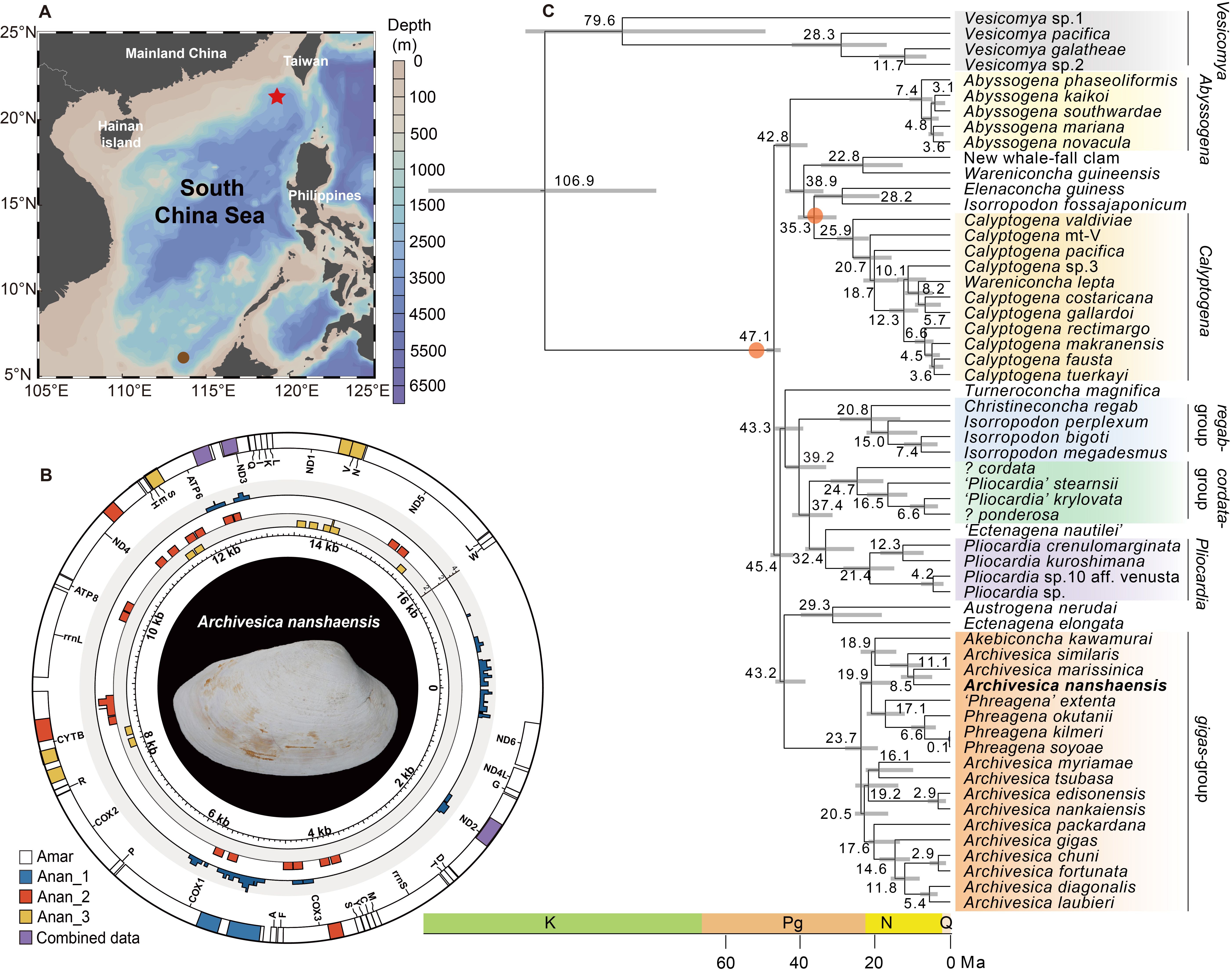
HKBU marine scientist utilises ancient shells DNA to place a deep-sea clam in the tree of Life
Previous News
Next News



(A) Map showing collection sites (red asterisk) of A. nanshaensis shells. (B) Visualization of the arrangement of mitochondrial gene fragments recovered from the shell samples. (C). Fossil-calibrated time tree showing the relationship between A. nanshaensis and other deep-sea clams.
Molluscan shells have been considered archives of their evolutionary history, but this potential has not been explored in deep-sea molluscs. This study, led by Professor Qiu Jianwen, Professor and Associate Head of Department of Biology, Hong Kong Baptist University, focused on a specific type of clam called Archivesica nanshaensis, which was known previously only by a pair of shells. The team collected three shells from a depth of 3,003 meters during a cruise in 2018 and determined that they were about 1,500 years old using carbon-14 analysis. They recovered ancient DNA from the shells and found that A. nanshaensis is genetically distinct from a closely related clam called A. marissinica. The genetic analysis also allowed them to estimate that these two clam species diverged from a common ancestor around 8.5 million years ago. This study demonstrates the potential of using ancient DNA to study deep-sea molluscs and provides valuable insights into the evolutionary processes that have shaped marine life.
The journal titled “Phylogenetic context of a deep-sea clam (Bivalvia: Vesicomyidae) revealed by DNA from 1500-year-old shells” was published in Zoological Research. Click here to learn more about Professor Qiu’s research.
Previous News
Next News



